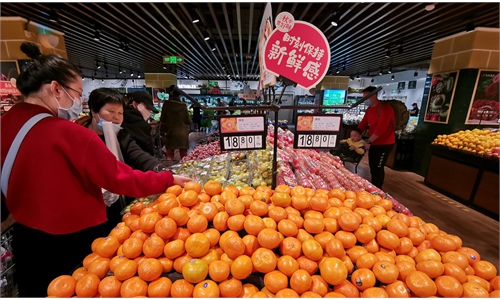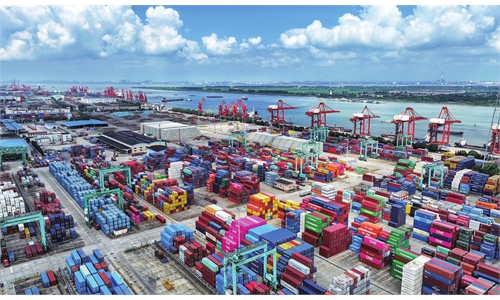China’s September foreign trade hits new monthly high of 2023 as recovery gathers steam
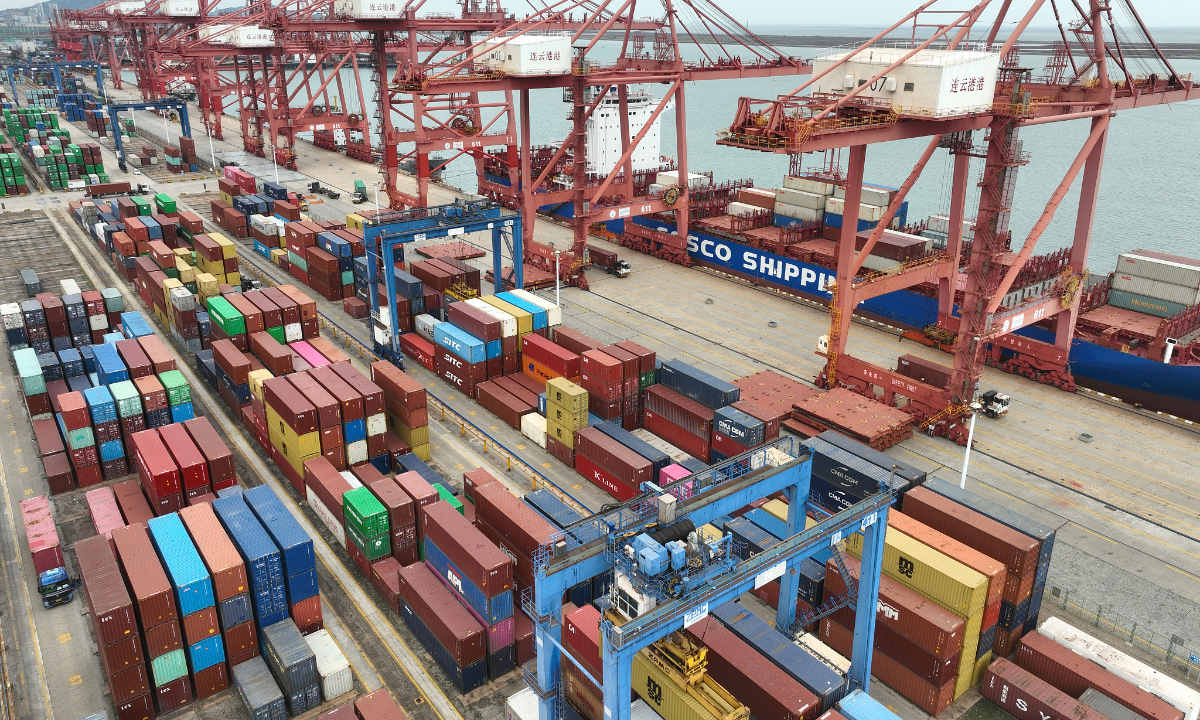
Lianyungang port in East China's Jiangsu Province. Photo:VCG
China released a series of positive economic indicators on Friday, including higher-than-anticipated exports and new monthly high of foreign trade, improving social financing data, and a rebounding consumer situation, signaling that the world's second-largest economy is withstanding external pressure and on a path to sustained recovery bolstered by a range of supportive policy measures over recent months, observer said.
The anticipated growth is expected to provide a significant boost to the global economy, which has been facing downward pressure and restrictive trade policies from some Western economies. Observers pointed out that a series of crucial events, including the upcoming Belt and Road Forum for International Cooperation, the Canton Fair, the China International Import Expo, and the inaugural China International Supply Chain Expo will present opportunities for the world to partake in this growth.
While mounting challenges and geopolitical complexities are highly likely to persist in the fourth quarter and might continue to weigh on the recovery, Chinese experts believe that policy measures coupled with improving endogenous growth drivers will ensure that China will reach its annual GDP growth target of about 5 percent in 2023.
Chinese Premier Li Qiang chaired a symposium with experts and entrepreneurs on the economic situation on Friday, listening to their opinions and suggestions on the current situation and the next step for the nation's economic work, indicating the Chinese top leadership's continued attention to the economic situation.
Li emphasized the need to maintain confidence, stay focused, and seek stability while pushing for high-quality economic development, calling for a greater emphasis on the effective implementation of macroeconomic policy regulation, with a continued effort to fine-tune macroeconomic policies and enhance policy preparedness.
"China is projected to grow 5 percent this year. As a result, China is going to contribute roughly one third of the global GDP growth," Steven Barnett, IMF Senior Representative for China, said at the launch of IMF World Economic Outlook 2023 in Beijing on Friday.
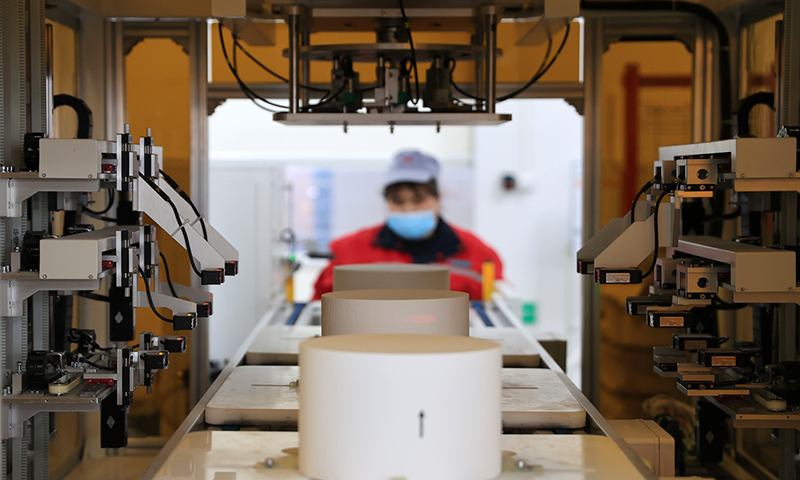
An employee watches as an AI industrial visual system inspects the quality of particulate filters for cars at a factory in Dongying, East China's Shandong Province. Photo: cnsphoto
Orders increasing
One closely watched set of data is China's trade figures for September, which registered month-on-month growth for a second consecutive month, with the trade volume reaching a new monthly high for the year, hitting 3.74 trillion yuan ($512 billion), data from the General Administration of Customs showed on Friday.
In the first three quarters of the year, China's foreign trade reached 30.8 trillion yuan in yuan-denominated terms, down 0.2 percent year-on-year. Exports rose 0.6 percent year-on-year, while imports fell 1.2 percent year-on-year, customs data showed.
Zhou Maohua, an economist at China Everbright Bank, said that September data shows "remarkable stability" in Chinese trade as it was achieved amid a challenging global demand environment, and substantial declines in exports from some of China's major trading partners.
Additionally, China has experienced a drop in both import and export commodity prices, while facing the challenge of high comparative figures from the previous year, Zhou told the Global Times on Friday.
China's foreign trade has withstood pressure despite an unstable world economy. As China's economy maintains an upward trend, and domestic growth drivers are strengthened, combined with the implementation of measures for stabilizing trade, it is believed that the momentum of foreign trade will become more solid, and quality will be further elevated, Lü Daliang, spokesperson from the General Administration of Customs told a press conference in Beijing on Friday.
The spokesperson noted that in the next stage, China's foreign trade is expected to receive continued support from a range of favorable factors, including an improving domestic economic performance.
For instance, the domestic PMI index has recorded a four-month consecutive increase, with August witnessing accelerated growth in industrial added value and retail sales of social consumer goods compared to the previous month. The recent Golden Week holidays also illustrated the robust vitality of the Chinese retail economy.
Chinese exporters are also optimistic about the trade situation, in a sign of bolstering confidence. "The market is still showing a positive change. Exports increased significantly in August and September," Zhu Qiucheng, CEO of Ningbo New Oriental Electric Industrial Development, an exporter of pet furniture and home furnishing products, told the Global Times on Friday.
From the perspective of target markets, Zhu noted that the US market may be narrowing, and orders from new markets, such as Southeast Asia and Latin America, are increasing. "Emerging markets will continue to dominate our exports in 2024," said Zhu.
"Overall, with strong policy support, concerted efforts from businesses, and collaboration from all sides, the export trend in the fourth quarter is expected to continue stabilizing and improving," Lü said.
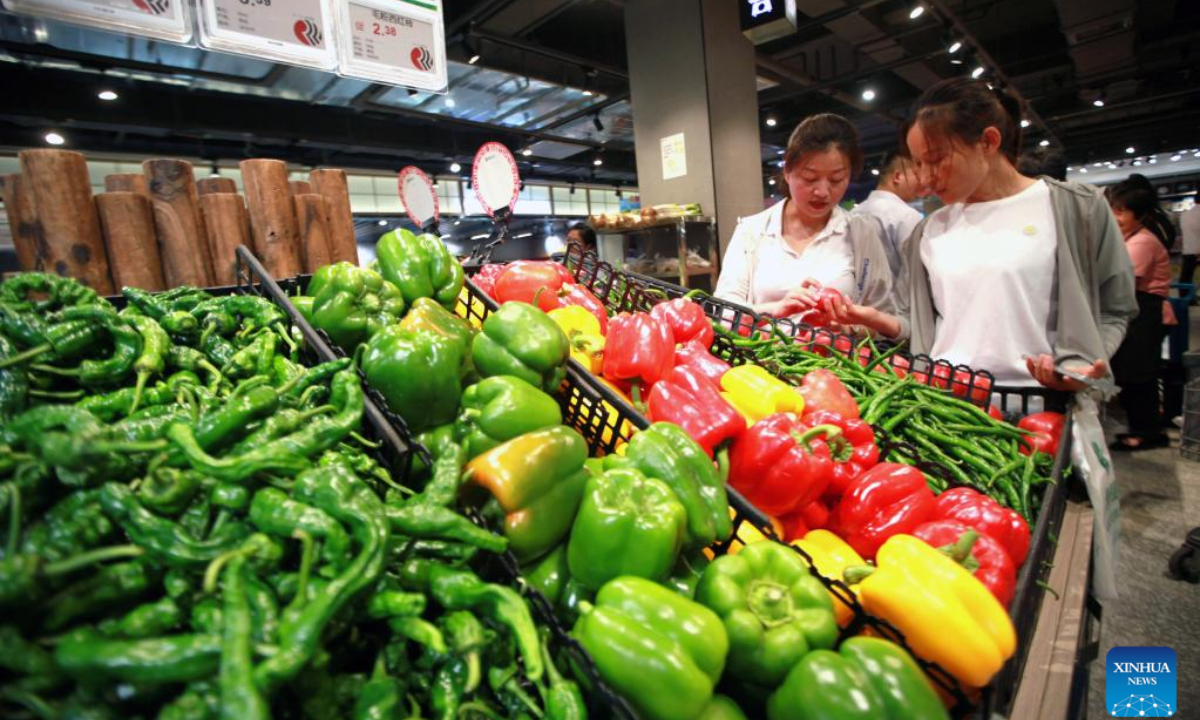
People select vegetables at a supermarket in Pingyi County, east China's Shandong Province, July 10, 2023. Photo:Xinhua
Stabilizing against headwinds
Apart from trade data, China also released its consumer price index (CPI) on Friday. Seen as a main gauge of inflation, CPI remained flat in September on a yearly basis, but rose 0.2 percent compared with the previous month as consumption continues to recover, the National Bureau of Statistics (NBS) said.
Separately, the producer price index, which measures costs for goods at the factory gate, fell 2.5 percent in September from a year earlier, following a 3 percent drop in August. The drop in factory prices was the smallest in seven months.
Chinese banks issued 2.31 trillion yuan ($316.31billion) of new yuan loans in September, up sharply from 1.36 trillion in August, data from the People's Bank of China showed.
The current policy stimulus is showing increasingly effective results, with robust and stable financial support, Zou Lan, director-general of the Monetary Policy Department of China's Central Bank said on Friday, noting that the financial data looks "promising."
Overall supply and demand are moving toward a better balance, Zou said, emphasizing that there is ample room and reserves for monetary policy to address unexpected changes.
The slew of economic data is demonstrating that the Chinese economy is currently stabilizing and recovering despite sustained challenges and pressure, Cong Yi, a professor from the Tianjin University of Finance and Economics, told the Global Times on Friday.
This recovery could support China in achieving an annual economic growth target of 5 percent, He Jun, a senior researcher of Anbound, an independent think tank, told the Global Times on Friday.
From a macroeconomic perspective, the third quarter of this year might represent the "trough" in China's economic growth for the entire year, with the economy in the fourth quarter expected to further pick up, He said,
"But we need to work hard from top to bottom, as stabilizing the economy is still China's biggest priority at present," the expert noted.
